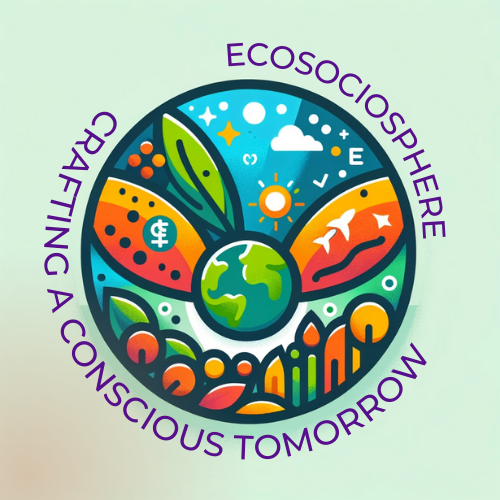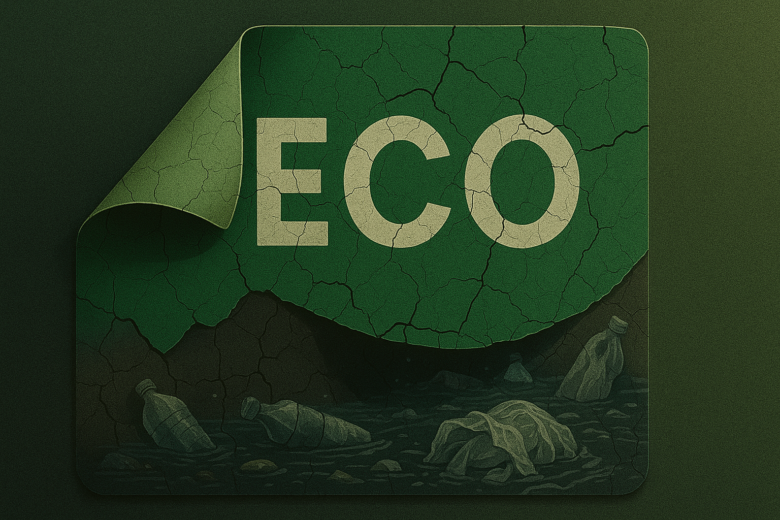Fun Fact: India generates over 3.5 million tonnes of plastic waste every year, yet many “eco-friendly” brands still sell products wrapped in layers of plastic.
Sustainability is the new buzzword. From “organic” cotton to “biodegradable” packaging and “natural” personal care products, Indian consumers are increasingly drawn to labels that promise a cleaner, greener lifestyle. But how many of these products are genuinely sustainable—and how many are just clever marketing?
Welcome to the era of greenwashing, where corporations use the language of sustainability to sell products that may not be green at all. In this blog, we’ll explore how greenwashing in India is shaping consumer behaviour, misleading the public, and possibly doing more harm than good.
What is Greenwashing?
Greenwashing is when a company misleads consumers by overstating or fabricating the environmental benefits of its products, policies, or operations. The term was coined in the 1980s, but its relevance has grown in India as awareness of climate change and pollution has pushed people toward more conscious consumption.
From beauty brands to fashion labels, greenwashing in India is not just common—it’s thriving. And the worst part? It often goes unnoticed.
Section 1: The Rise of the “Green” Indian Consumer
India’s consumer base is evolving. Studies show that over 70% of urban Indian shoppers prefer eco-friendly brands and are willing to pay a premium for them. This shift is encouraging, but it’s also a golden opportunity for brands to exploit.
Take, for example, the sudden boom in bamboo toothbrushes, “chemical-free” skin care, or “organic” clothing. On the surface, this looks like progress. However, a closer look reveals a much less clear and more troubling reality.

Section 2: Common Greenwashing Tactics in India
- Vague Labelling
Words like “natural,” “clean,” “green,” or “eco-safe” sound good but have no legal definition. A shampoo bottle claiming to be “natural” may still contain synthetic preservatives and fragrances.
- Hidden Trade-Offs
Some products do use eco-friendly materials, but the manufacturing process may involve toxic chemicals or high carbon emissions. For instance, a clothing brand may promote “organic cotton” but use dyes that pollute rivers in Tiruppur or Kanpur.
- Irrelevant Claims
Brands often highlight features that are technically true but meaningless. For example, saying a product is “CFC-free” (Chlorofluorocarbon-free) when CFCs have been banned for years in India.
- Green Imagery
Packaging with green leaves, earth symbols, and recyclable signs gives an illusion of sustainability—even when the product inside is anything but.
- Lack of Transparency
Many Indian brands fail to share third-party certifications or environmental audit results. If a brand is truly sustainable, why hide the data?
Section 3: Real-Life Examples of Greenwashing in India
Case 1: Fashion Faux Pas
A popular Indian apparel brand (name withheld due to legal concerns) markets its “sustainable collection” as eco-friendly, but a 2023 study by an NGO found that the brand sources fabric from suppliers with a poor environmental record.
Case 2: Personal Care Confusion
A well-known Indian brand in the herbal wellness space promotes its products as being rooted in nature, often highlighting claims of being free from synthetic chemicals and additives. While many products do use plant-based ingredients, critics argue that some items contain undisclosed preservatives and surfactants.
Case 3: Food Packaging Illusions
Several food delivery startups in India claim to use “eco-friendly” packaging. In reality, their containers are coated with plastic films that render them non-compostable.
Section 4: How to Spot a Greenwashed Product
Check for Certifications: Look for credible marks like India Organic, USDA Organic, Forest Stewardship Council (FSC), or Fairtrade.
Read the Ingredients: If it says “chemical-free,” yet lists synthetic compounds, red flag.
Research the Company: Is the brand transparent about its sourcing, labour, emissions, and disposal methods?
Avoid Buzzwords: Be sceptical of packaging that uses too many vague adjectives without explaining how they’re achieved.
Ask Questions: Ethical brands welcome questions and often provide detailed FAQs.
Section 5: Regulatory Blind Spots in India
India lacks strict legislation to monitor green claims. ASCI (The Advertising Standards Council of India) has guidelines against misleading ads, but rarely enforces them in environmental contexts. Likewise, while the Bureau of Indian Standards (BIS) offers eco-labels, their use is optional and remains limited across industries.
This regulatory vacuum allows companies to self-certify, mislead, and profit—all while consumers believe they’re making ethical choices.
Section 6: The Cost of Believing Green Lies
Greenwashing doesn’t just deceive consumers—it derails genuine sustainability efforts. It allows unsustainable businesses to thrive while undercutting eco-conscious startups that actually follow sustainable practices but can’t afford glossy marketing.
More dangerously, it creates a false sense of progress. If everyone thinks they’re already doing their part by using “eco-friendly” floor cleaners or “green” plastic bags, the urgency to demand real change diminishes.
Section 7: Brands Doing It Right
To be fair, not all brands are guilty. Some Indian companies are setting examples:
Bare Necessities (India): Offers zero-waste personal and home care products, with full ingredient transparency and sustainable sourcing.
No Nasties (India): A Goa-based clothing company using organic cotton, fair trade labour, and carbon-neutral shipping.
Daily Dump (India): Specialises in composting solutions and openly shares their product lifecycle and impact.
These brands prove that sustainability in India can be honest, effective, and scalable.
Conclusion: Time to Clean Up the Green Act
Greenwashing in India is more than just a marketing trick—it’s a betrayal of trust. It takes advantage of well-meaning consumers and sidelines genuine progress in environmental conservation.
As responsible citizens, we need to be more vigilant, ask harder questions, and refuse to settle for half-truths wrapped in green packaging. And policymakers need to step up with stronger laws and enforcement.
Because the planet can’t afford marketing gimmicks—it needs real action.
Author’s Note:
This blog was written with the hope of empowering Indian consumers to see beyond the “eco” labels and demand more from brands and authorities alike. True sustainability is not about appearances—it’s about accountability.
G.C., Ecosociosphere contributor.




